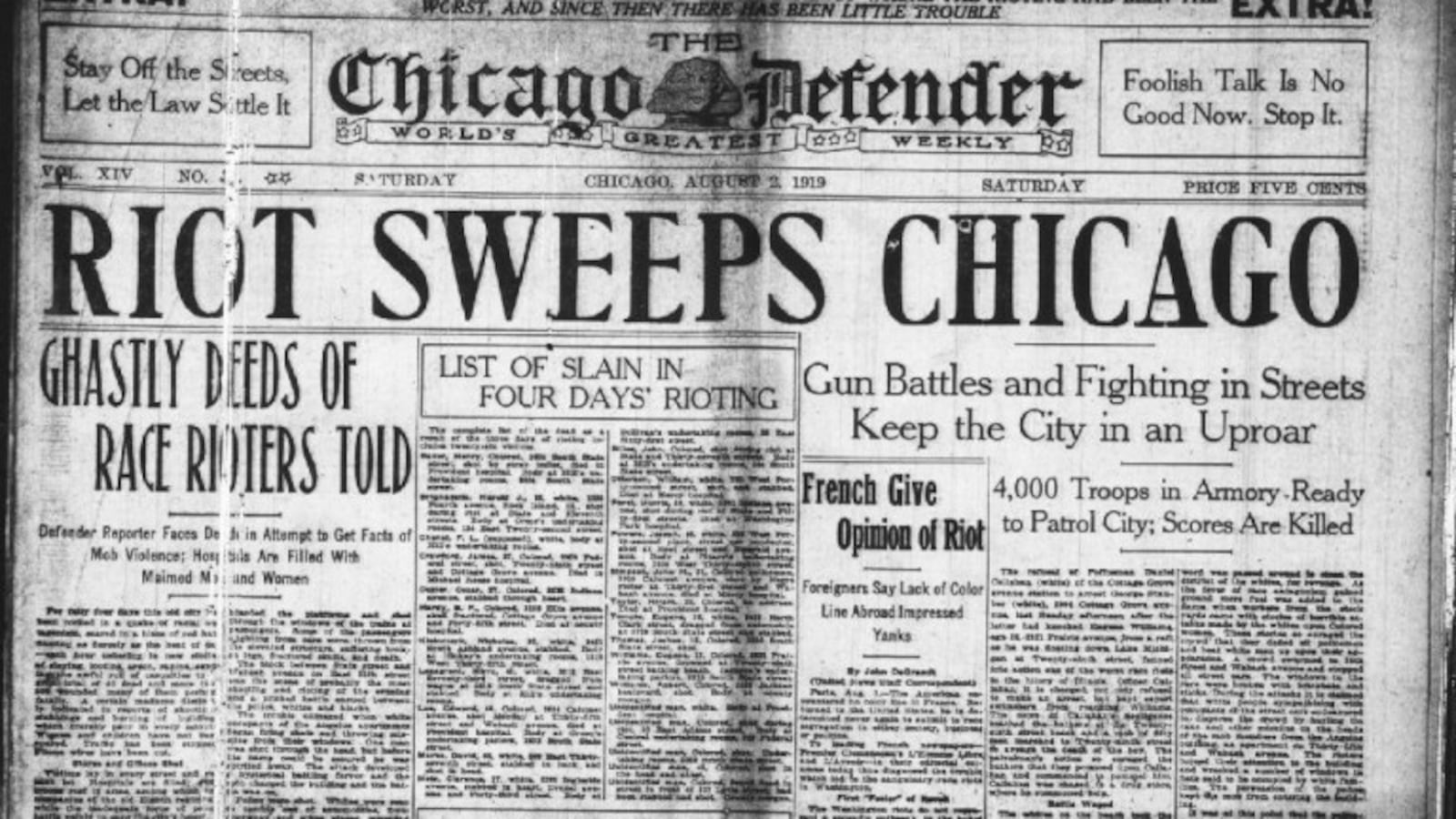Chicago schools chief Janice Jackson has spoken often about the need to create more culturally relevant lessons and tailor them to Chicago students. On Monday, she said that the district will offer a teaching guide about the 1919 race riots, a landmark event in city history.
Jackson said that the guide will be available online by September, though teachers are not required to implement it. The program will provide lessons for students across grade levels, describing bloody riots that broke out for seven days across Chicago.
“Given the 100th anniversary, I’m sure teachers will be excited about [the guide],” Jackson said after a commemorative event. “But we will be able to check and see where it’s implemented.”
Earlier this month, the district announced a $135 million curriculum initiative to put high-quality materials in the hands of Chicago’s teachers. Though the teaching guide is separate from that two-year initiative, it takes a small step toward realizing the vision of a more culturally relevant curriculum.
In recent years, public schools have adopted a curriculum that teaches students about police violence under Jon Burge, an Englewood commander and detective who jailed and tortured hundreds of black and brown men in the 1970s and ’80s. The district has also developed a new civics curriculum with the goal of empowering students to get more involved with their communities.
The 1919 race riots were one of the darkest chapters of Chicago’s history. As black and white soldiers returned from World War I and African Americans migrated from the South to northern cities, racial tensions bubbled up in Chicago in 1919.
On July 27, when 17-year-old Eugene Williams and his friends drifted across the divide between the white beach and the black beach at 29th Street, a white man threw a stone at their boat, which hit Williams on the head. The boy drowned, but a white police officer refused to arrest the stone-thrower.
Over the next week, riots broke out across the city, and more than 500 people were injured and 38 killed. Though violence targeted more black people than white people, only three men were convicted of riot-related charges, all of them black.
At a commemoration ceremony Monday at Dunbar Vocational Career Academy High School, Mayor Lori Lightfoot announced the new teaching guide, emphasizing the importance of educating Chicago’s students about the city’s “painful history with racism.” Practices like redlining, police violence, and systematic disinvestment in black and brown neighborhoods stem directly from the violence of 1919, Lightfoot said.
“Learning from our history is possible only by knowing our history, not just as a footnote, not just as a passing mention in somebody else’s story, but knowing it for what it is, as a living breathing part of our daily experience,” Lightfoot said. “If we are ever going to move forward from the events of 1919 and the forces behind it, we have to keep these events alive, and that’s exactly what we’re doing here in Chicago.”

